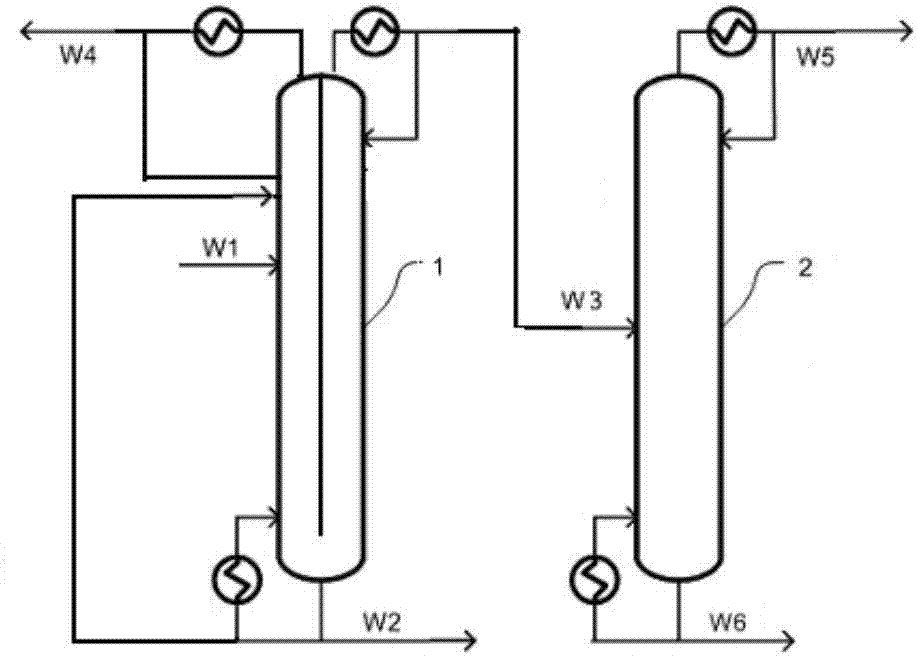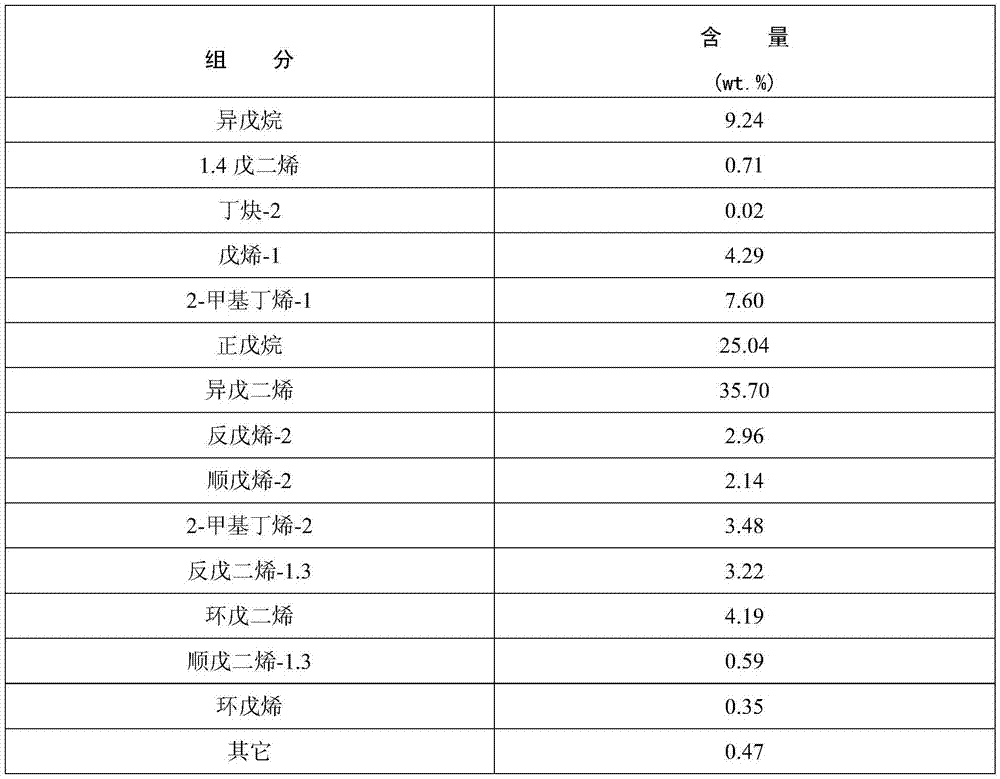Method for separating chemical-grade isoprene
A technology of isoprene and separation method, which is applied in the field of separation of chemical grade isoprene, can solve the problem of inability to balance energy consumption and isoprene yield, purity, and inability to obtain pure isoprene, purification and Regenerate high-level problems, achieve the effect of shortening the residence time, reducing equipment investment, and increasing the total yield
- Summary
- Abstract
- Description
- Claims
- Application Information
AI Technical Summary
Problems solved by technology
Method used
Image
Examples
Embodiment
[0021] Embodiment [1-10]
[0022] The technological process of embodiment 1~10 sees figure 1 , the raw material W1 is a C5 raw material from which cyclopentadiene has been pretreated, and its main composition is shown in Table 1.
[0023] The process and operating conditions of separation tower 1 and weight removal tower 2 are shown in Table 2 and Table 3 respectively. The composition of isoprene in the product was analyzed by gas chromatography, and the yield of isoprene was calculated in combination with the flow rate of each material. The results are shown in Table 4.
[0024] Table 1.
[0025]
[0026] Table 2.
[0027]
[0028] table 3
[0029]
[0030] Table 4.
[0031]
PUM
 Login to View More
Login to View More Abstract
Description
Claims
Application Information
 Login to View More
Login to View More - R&D
- Intellectual Property
- Life Sciences
- Materials
- Tech Scout
- Unparalleled Data Quality
- Higher Quality Content
- 60% Fewer Hallucinations
Browse by: Latest US Patents, China's latest patents, Technical Efficacy Thesaurus, Application Domain, Technology Topic, Popular Technical Reports.
© 2025 PatSnap. All rights reserved.Legal|Privacy policy|Modern Slavery Act Transparency Statement|Sitemap|About US| Contact US: help@patsnap.com



